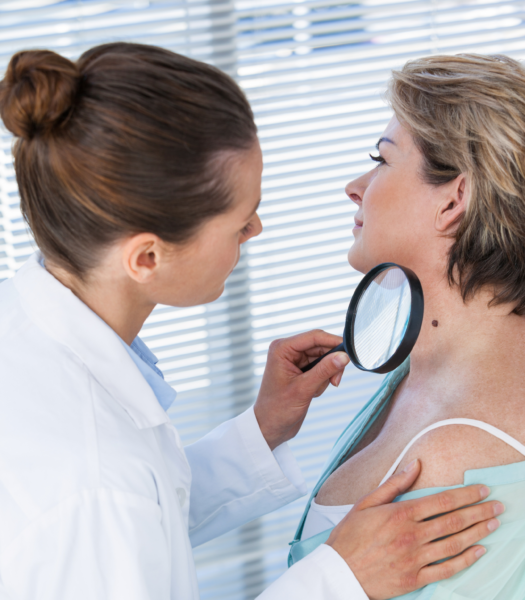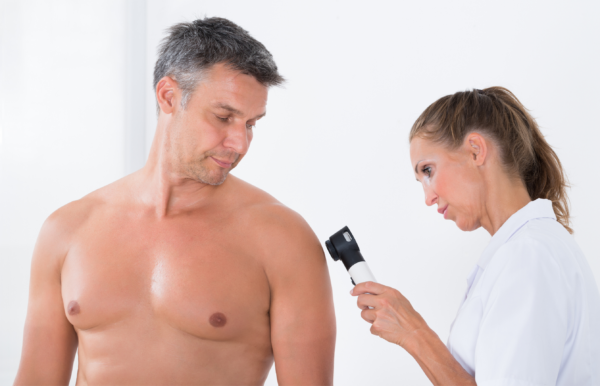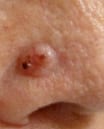What is it?
Basal cell carcinoma is the most common form of skin cancer, affecting 50,000 – 60,000 Canadians each year. It is the most common of all cancers. 1/3 of new cancers is a skin cancer, and the vast majority are basal cell carcinomas (BCC).
These cancers arise from trichoblasts, cells that resides in/close to the basal cell layer (lowest layer) of the epidermis (outer skin layer). They are caused from chronic exposure to ultraviolet radiation (sunlight), particularly UVB. Artificial sources of ultra-violet light, including tanning beds, may also contribute.
BCC occurs more frequently on typically sun-exposed parts of the body: face, neck, scalp, hands, shoulders, arms, and back. The rim of the ear and the lower lip are especially vulnerable.
Tumours develop on non-exposed areas. In rare cases, genetic factors, contact with arsenic, exposure to radiation, and complications from burns, scars, vaccinations, or even tattoos can be contributing factors.
Who Gets It?
Generally, BCC occurs more frequently among people who:

- are aged 40+
- are fair-skinned
- have blonde or red hair
- have blue, green, or grey eyes
- are prone to freckling and sunburns
- work outdoors
- have a history of frequent sun exposure
- have a family history of BCC
- take immunosuppressive drugs long term, or have immunosuppressed systems due to illness
- have a history of x-ray treatment for facial acne
Until recently, most cases were seen in older people, particularly men who had worked outdoors. However, in the last few decades, the number of new cases of BCC has increased sharply in younger populations. Though men are still more commonly affected, rates of BCC among women are increasing.
Genetics also play a role as people who have fair skin, blonde or red hair, and blue, green or grey eyes, are at the highest risk. The susceptibility for having multiple occurrences of BCC may be inherited. Those whose occupations require long hours outdoors or who spend extensive leisure time in the sun are at an increased risk.
What to Look For?
Although skin cancers can occur in non-sun-exposed areas, the most common location for BCC is the face.
- A persistent, non-healing sore that persists for 3+ weeks, bleeds, oozes or crusts

- A reddish patch or irritated area that frequently seen on chest, shoulders, arms, or legs. This patch can be itchy, painful and/or crusted
- A shiny bump or nodule that is pearly or translucent, pink, red, or white in colour. Can be tan, brown or black, especially on dark-haired people
- A pink growth that is slightly elevated, and might have a rolled border, crusted indentation in the centre and/or tiny blood vessels that may develop on the surface
- A scar-like area that is white, yellow or waxy, often has poorly defined borders, and appears shiny and taut. Note: This can indicate the presence of an aggressive tumour
Frequently, two or more features are present in one tumour. In addition, basal cell carcinoma sometimes resembles non-cancerous skin conditions such as psoriasis or eczema.
What is advanced BCC?
An estimated 1% of all BCC cases will progress to advanced BCC and either invade the surrounding tissue (locally advanced) or spread to other parts of the body (metastasized). This may result in debilitating effects, severe deformities and even death.
Advanced BCCs are often open lesions that may bleed, become infected, and produce unpleasant odours.

